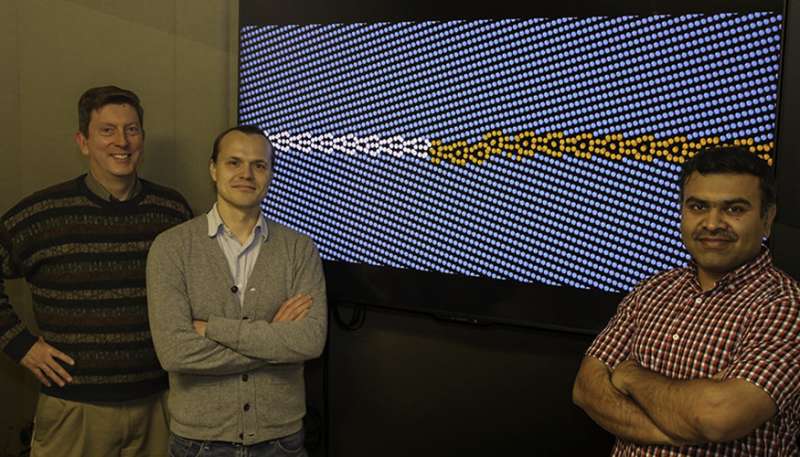Machine learning model predicts phenomenon key to understanding material properties

Using machine learning, evolutionary algorithms and other advanced computational techniques, researchers at Lawrence Livermore National Laboratory (LLNL) have successfully modeled how atoms are arranged between the crystals that make up most materials, a development that could impact how future materials are designed and optimized.
While most materials might appear to the naked eye as uniform solids, they're actually composed of tiny crystallites or grains separated on the atomic level by interfaces that scientists call grain boundaries. Because of their importance to material properties and functions, the structures of these grain boundaries have been extensively investigated. However, searching through the billions of possible structures by hand and trying to predict their behavior has been an exercise in futility.
Researchers at LLNL, the University of Nevada-Las Vegas, Stony Brook University and UC Davis have devised a method based on evolutionary algorithms and machine learning capable of combing through the vast space of how atoms in grain boundaries can be arranged and predicting how they will interact under certain conditions. Scientists said the method finally provides a way to predict material properties and could lead to major breakthroughs in developing materials with greater strength, more heat resistance or higher conductivity. The paper was featured at The Minerals, Metals & Materials Society's 2018 international conference in Phoenix earlier this year.
"What we developed is the first-of its kind computational tool that effectively samples possible structures of grain boundaries and finds low-energy structures as well as important metastable states," said LLNL scientist Timofey Frolov, the project's principal investigator. "What's surprising and shocking is that we thought we understood the structures of boundaries, but we don't. Basically, we start from scratch now because many boundaries we look at have a different structure from what we previously thought."
The atomistic makeup of grain boundaries is foundational to how certain materials will perform or change phases (i.e. solid to a liquid) under conditions such as intense heat or extreme pressure. Using machine learning to explore possible structures and having the ability to model them computationally could have a significant impact on designing materials for a broad range of energy applications including solid state fuel cells, thermoelectrics for power generation, oxygen sensors, optical fibers, switches, laser amplifiers and lenses, scientists said.
"There's been a revolution in recent years using machine learning to get at things you couldn't get at before, and the search for a grain boundary structure was giving incorrect results—you need the power of these modern techniques to find the right answer," said LLNL Computational Materials Science Group Leader Robert Rudd. "A lot of the technological changes we've seen in recent decades have been made possible by materials that didn't exist previously, so enabling and optimizing design for these structures is going to be a game-changer."
Researchers created and characterized the new model using copper and have successfully demonstrated and tested it with silicon, tungsten and other materials. It's also being implemented already within LLNL's fusion energy program. Frolov said he wants to further develop the method for functional ceramics in systems with many elements, which display fascinating and complicated transitions at high temperature.
"Large number of recent experimential studies demonstrated dramatic changes in grain growth behavior in ceramic materials upon doping and linked these changes to structural transitions at grain boundaries," Frolev said. "For example, a formation of abnormally large grains can drastically change properties of a material, but difficult to predict or control. Our new method provides first solid evidence of transitions at grain boundaries. We can now predict different states of grain boundaries and explain the abrupt changes in properties of materials seeing in experiment."
More information: Qiang Zhu et al. Predicting phase behavior of grain boundaries with evolutionary search and machine learning, Nature Communications (2018). DOI: 10.1038/s41467-018-02937-2
Journal information: Nature Communications
Provided by Lawrence Livermore National Laboratory





















